
Southwestern Chile Production
Chile (Capsicum annuum) production is an important aspect of vegetable crop production systems in the desert Southwest. In many respects, chiles are a trademark feature of crop production in the desert Southwest. The Southwestern (SW) Chile Belt extends from southeast Arizona, across southern New Mexico, into far-west Texas, and northern Chihuahua, Mexico. The SW Chile Belt is dominated by production of New Mexico-type chile, also commonly referred to as “Hatch chile” and sometimes referred to as “Anaheim” type chile.
Recent acreages across the SW Chile Belt have consisted of approximately 7-8,000 acres in NM, 3-4,000 in TX, approximately 90,000 acres in Chihuahua, and about 300-500 acres in Arizona. Chiles are often associated with New Mexico, but Arizona also has a strong connection to this chile industry. For example, the Curry Chile Seed Company, based in Pearce, AZ, provides the seed for >90% of the total green chile acreage across the SW Chile Belt.
Chile peppers (Capsicum species) are among the first crops domesticated in the Western Hemisphere about 10,000 BCE (Perry et al., 2007). The Capsicum genus became important to people and as result, five different Capsicum species that were independently domesticated in various regions of the Americas (Bosland &Votava, 2012). Early domestication of chile peppers by indigenous peoples was commonly driven for use as medicinal plants. Due to their flavor and heat characteristics, chile peppers are a populate food ingredient in many parts of the world, including Latin America, Africa, and Asia cuisines. Chiles have been increasingly important to the U.S. and European food industries, particularly as these populations become more familiar with chile (Guzman and Bosland, 2017).
There are five domesticated species of chile peppers. 1) Capsicum annuum is probably the most common to us and it includes many common varieties such as bell peppers, wax, cayenne, jalapeños, Thai peppers, chiltepin, and all forms of New Mexico chile. 2) Capsicum frutescens includes malagueta, tabasco, piri piri, and Malawian Kambuzi. 3)Capsicum chinense includes what many consider the hottest peppers such as the naga, habanero, Datil, and Scotch bonnet. 4) Capsicum pubescens includes the South American rocoto peppers. 5) Capsicum baccatum includes the South American aji peppers.
The Capsicum annuum species is the most common group of chiles that we encounter and there are at least 14 very different pod types in this single species that includes: New Mexico (aka Anaheim), bell peppers, cayennes, jalapeños, paprika, serrano, pequin, pimiento, yellow wax, tomato, cherry, cascabel, ancho (mulato, pasilla), and guajillo (Guzman and Bosland, 2017).
Crop Phenology
Plants vary tremendously in their physiological behavior over the course of their life cycles. As plants change physiologically and morphologically through their various stages of growth, water and nutritional requirements will change considerably as well. Efficient management of a crop requires an understanding of the relationship between morphological and physiological changes that are taking place and the input requirements.
Heat units (HUs) can be used as a management tool for more efficient timing of irrigation and nutrient inputs to crop and pest management strategies. Plants will develop over a range of temperatures which is defined by the lower and upper temperature thresholds for growth (Figure 1). Heat unit systems consider the elapsed time that local temperatures fall within the set upper and lower temperature thresholds and thereby provide an estimate of the expected rate of development for the crop. Heat unit systems have largely replaced days after planting in crop phenology models because they take into account day-to-day fluctuations in temperature. Phenology models describe how crop growth and development are impacted by weather and climate and provide an effective way to standardize crop growth and development among different years and across many locations (Baskerville and Emin, 1969; Brown, 1989).
The use of HU-based phenology models are particularly important and applicable in irrigated crop production systems where water is a non-limiting factor. Water stress will alter phenological plant development and it is a major source of variation in crop development models. Accordingly, irrigated systems are more consistent in crop development patterns and HU models can be much more consistent and reliable.
Chiles are a warm season, perennial plant with an indeterminant growth habit that we grow and manage as an annual crop. The fruiting cycle begins at the crown stage of growth and continues until the plant reaches a point of “cut-out” with hiatus in blooming as the plant works to mature the chile fruit crop that has been developed.
The first step in developing a phenological guideline for chiles would be to look for critical stages of growth in relation to HU accumulation. Figure 2 describes the basic phenological baseline for New Mexico – type chile and was developed from field studies conducted in New Mexico and Arizona (Silvertooth et al., 2010 and 2011; Soto et al., 2006; and Soto and Silvertooth, 2007).
Water and nutrient demands coincide with the fruiting cycle and efficient management of irrigation water and plant nutrients is enhanced by tracking crop development in the field. The use of HUs (86/55 oF thresholds) can be applied since the thermal environment impacts the development of all crop systems, including chiles, (Figures 2 and 3).
Use of HUs to predict chile development is generally superior to using days after planting due to the simple fact that the crop responds to environmental conditions and not calendar days. This approach, using phenological timelines or baselines, works best for irrigated conditions where crop vigor and environmental growth conditions are more consistent than in non-irrigated or dryland situations where irregularity in year-to-year rainfall patterns can alter growth and development patterns significantly. Accordingly, water stress in an irrigation system will alter phenological plant development and usually accelerate crop maturity and create an earlier crop and increase fruit abortion or cause smaller fruit development.
Crop Phenology Relationship to Nutrient and Water Demand
Phenological guidelines can be used to identify or predict important stages of crop development that impact physiological requirements. For example, a phenological guideline can help identify stages of growth in relation to crop water use (consumptive use) and nutrient uptake patterns. This information allows growers to improve the timing of water and nutrient inputs to improve production efficiency. For some crops or production situations HU based phenological guidelines can be used to project critical dates such as harvest or crop termination. Many other applications related to crop management (e.g., pest management) can be derived from a better understanding of crop growth and development patterns.
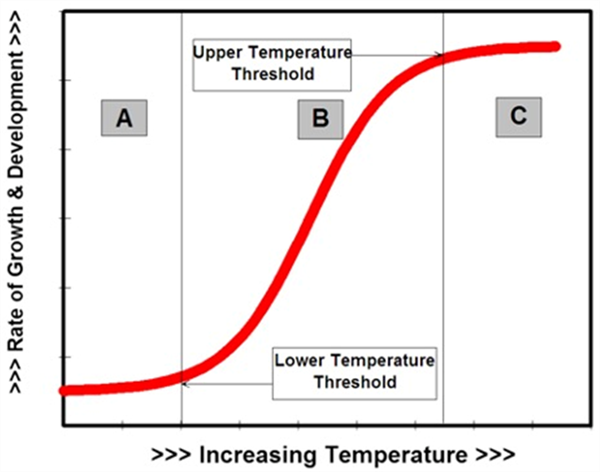
Figure 1. Typical relationship between the rate of plant growth and development and temperature. Growth and development ceases when temperatures decline below the lower temperature threshold (A) or increase above the upper temperature threshold (C). Growth and development increases rapidly when temperatures fall between the lower and upper temperature thresholds (B).
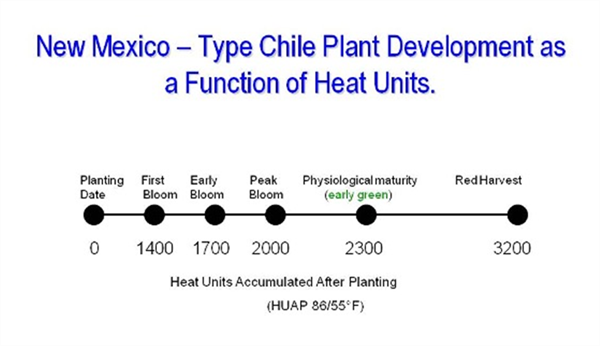
Figure 2. Basic phenological guideline for irrigated New Mexico-type chiles.
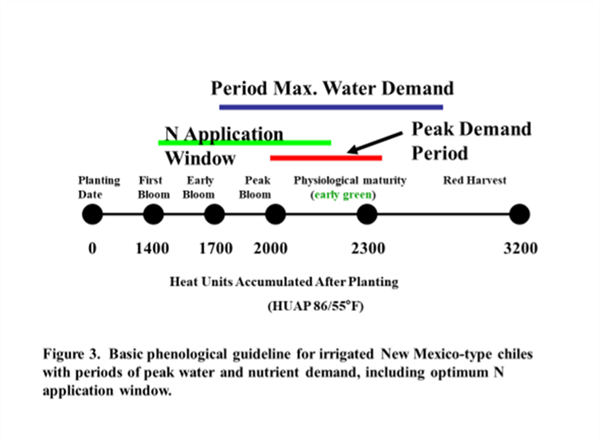
References
Baskerville, G.L. and P. Emin. 1969. Rapid estimation of heat accumulation from maximum and minimum temperatures. Ecology 50:514-517.
Bosland, P.W., E.J. Votava, and E.M. Votava. 2012. Peppers: Vegetable and spice capsicums. Wallingford, U.K.: CAB Intl.
Brown, P. W. 1989. Heat units. Bull. 8915, Univ. of Arizona Cooperative Extension, College of Ag., Tucson, AZ.
Guzmán, I. and P.W. Bosland. 2017. Sensory properties of chile pepper heat - and its importance to food quality and cultural preference. Appetite, 2017 Oct 1;117:186-190. doi: 10.1016/j.appet.2017.06.026.
Perry, L., Dickau, R., Zarrillo, S., Holst, I., Pearsall, D. M., Piperno, D. R., et al. 2007. Starch fossils and the domestication and dispersal of chili peppers (Capsicum spp. L.) in the Americas. Science, 315, 986-988.
Silvertooth, J.C., P.W. Brown, and S. Walker. 2010. Crop Growth and Development for Irrigated Chile (Capsicum annuum). University of Arizona Cooperative Extension Bulletin No. AZ 1529
Silvertooth, J.C., P.W. Brown and S.Walker. 2011. Crop Growth and Development for Irrigated Chile (Capsicum annuum). New Mexico Chile Association, Report 32. New Mexico State University, College of Agriculture, Consumer and Environmental Science.
Soto-Ortiz, Roberto, J.C. Silvertooth, and A. Galadima. 2006. Crop Phenology for Irrigated Chiles (Capsicum annuum L.) in Arizona and New Mexico. Vegetable Report, College of Agriculture and Life Sciences Report Series P-144, November, University of Arizona.
Soto-Ortiz, R. and J.C. Silvertooth. 2007. A Crop Phenology Model for Irrigated New Mexico Chile (Capsicum annuum L.) The 2007 Vegetable Report. Jan 08:104-122.
I hope you are frolicking in the fields of wildflowers picking the prettiest bugs.
I was scheduled to interview for plant pathologist position at Yuma on October 18, 2019. Few weeks before that date, I emailed Dr. Palumbo asking about the agriculture system in Yuma and what will be expected of me. He sent me every information that one can think of, which at the time I thought oh how nice!
When I started the position here and saw how much he does and how much busy he stays, I was eternally grateful of the time he took to provide me all the information, especially to someone he did not know at all.
Fast forward to first month at my job someone told me that the community wants me to be the Palumbo of Plant Pathology and I remember thinking what a big thing to ask..
He was my next-door mentor, and I would stop by with questions all the time especially after passing of my predecessor Dr. Matheron. Dr. Palumbo was always there to answer any question, gave me that little boost I needed, a little courage to write that email I needed to write, a rigid answer to stand my ground if needed. And not to mention the plant diagnosis. When the submitted samples did not look like a pathogen, taking samples to his office where he would look for insects with his little handheld lenses was one of my favorite times.
I also got to work with him in couple of projects, and he would tell me “call me John”. Uhh no, that was never going to happen.. until my last interaction with him, I would fluster when I talked to him, I would get nervous to have one of my idols listening to ME? Most times, I would forget what I was going to ask but at the same time be incredibly flabbergasted by the fact that I get to work next to this legend of a man, and get his opinions about pest management. Though I really did not like giving talks after him, as honestly, I would have nothing to offer after he has talked. Every time he waved at me in a meeting, I would blush and keep smiling for minutes, and I always knew I will forever be a fangirl..
Until we meet again.
Over the last couple of years, we have been investigating the use of band-steam to control weeds and soilborne pathogens. The technique has been discussed in previous mechanization UA Veg IPM articles (link). Briefly, the concept behind band-steam is to disinfest narrow bands of soil centered on the seedline using high temperature steam prior to planting. After the soil cools (<1 day), the crop is planted into the disinfested band (Fig. 1). Weed emergence and disease inoculum is reduced in the seedline. Weeds outside the seedline can be easily removed through cultivation.
Trials results have been impressive, particularly for in-row weed control (Fig. 2). We’ll be demonstrating our 2ndgeneration prototype band-steam applicator and sharing study results at the 2023 Southwest Ag Summit Field Demo, February 22nd (Fig. 3) We’ll also discuss and like to get your input on a new project – development and evaluation of a commercial scale band-steam applicator. The goal of the project is to build a self-propelled steam applicator and evaluate the viability of band steaming at the commercial field scale level. We’re in the preliminary design process now; a concept sketch is shown in Fig. 4. We’d love to get your input/feedback at this stage of the process. Please feel free to reach out to me anytime.
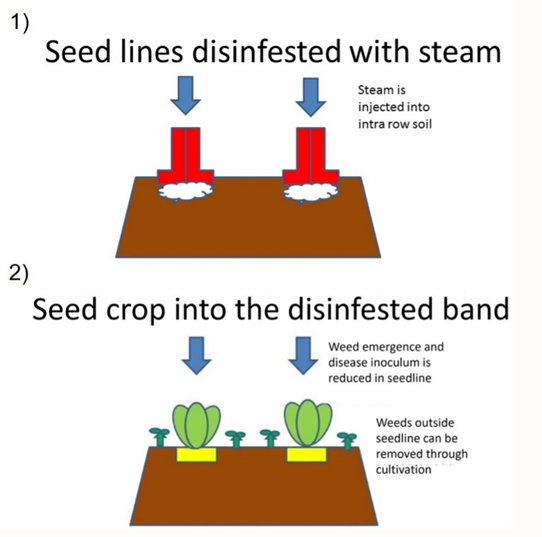
Fig. 1. Treatment sequence: 1) steam is injected into soil where seedline will be
located, then 2) later the crop is planted in the steamed seedline.
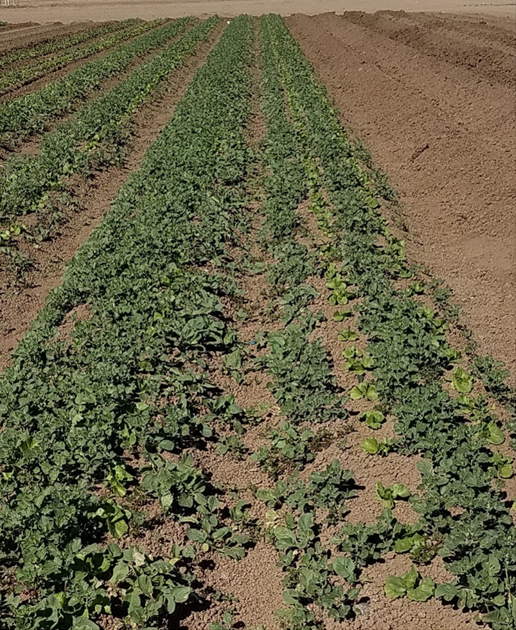
Fig. 2. Weed control in lettuce seedlines of beds treated with band-steam (right)
and untreated (left).
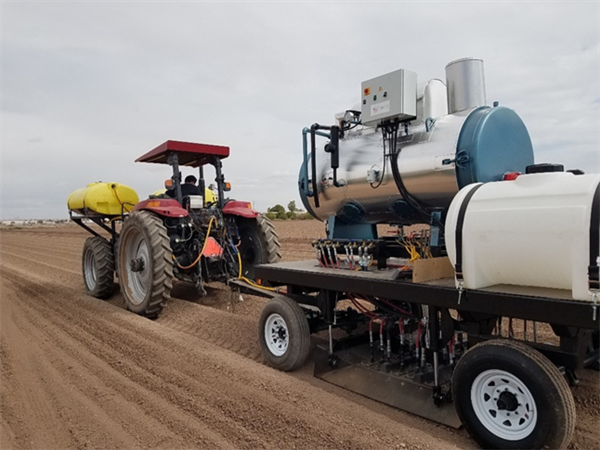
Fig. 3. 2nd generation band steam applicator to be demoed at the 2023 Southwest
Ag Summit Field Demo held February 22rd, 2023 in Yuma, AZ
(https://yumafreshveg.com/southwest-ag-summit/).
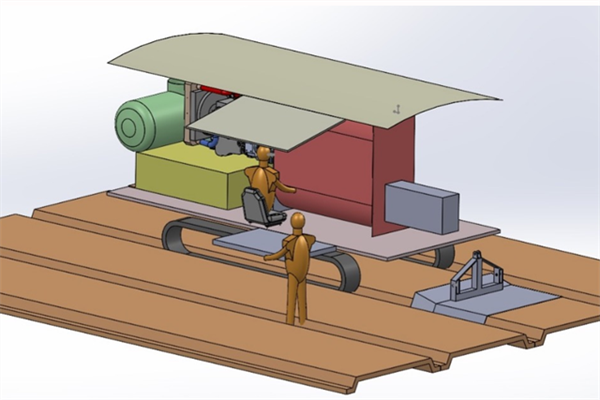
Fig. 4. Concept drawing of a proposed commercial style steam applicator. The
unit has a propane fueled engine and steam generator. The steam injection occurs
at the back of the machine. Water is carried in tanks below the engine, and rubber
tracks are proposed to disperse the weight and avoid soil compaction.
We published this booklet last July. Please let us know what you think by responding our five questions in the link provided below, email marcop@ag.arizona.edu and let us know if you like to receive a free of the booklet!
The method for identification presented is not by using a dichotomous key or answering complicated questions about the species. The idea is to leaf through the booklet and find images that match plants you see in the field. If there are unusual characteristics, we note them in our comments for each weed. Here is a link to the guide in PDF format: HERE